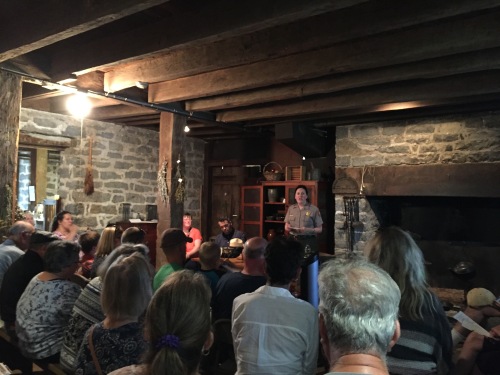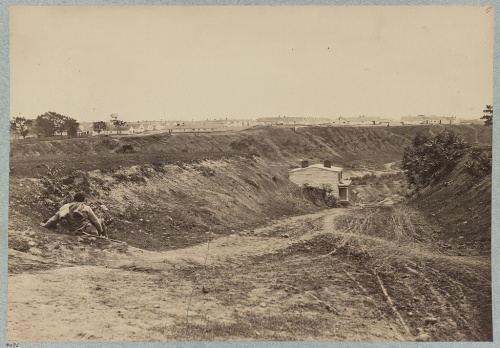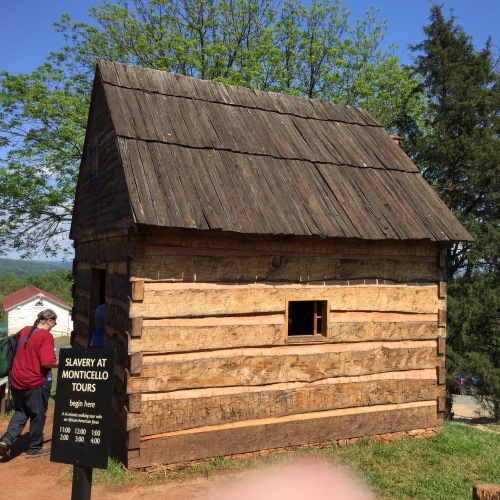After a long hiatus, I had to return to what I’ve often called “my poor neglected blog.” This is in direct response to the events of February-June 2020. In these months, Americans have learned of people who lived relatively ordinary lives who were loved within their families and communities; but, whom considerable parts of America and the world had never heard of: Ahmaud Arbery, Breonna Taylor, George Floyd, David McAtee. The list is long when we look before early 2020. These people’s tragic deaths come in an era of a vast majority of people having video capabilities in their pockets due to the advances made in cell phone technology. Social media, available in those same cell phones, allows people to spread the news around the world. This November marks eight years that I discovered one of my young cousins had been murdered in Florida in a situation that did not involve the police; but, still involved white supremacy. As a Black person, the repetitive nature of these recent killings has made me think of those who read newspapers in the late 1800s-early 1900s and read routinely of lynchings. As a historian, I hear echoes of the voices of the past in the protests of today. Those voices, including the anguish of families and victims themselves, whisper as loudly as leaves crunching beneath our feet in the winter.
What to do? I have watched videos and had conversations with family, friends, and colleagues. However, it is social media where much discussion happens, which I have observed or participated in. Social media can be a place of negativity; but it can also be a place exposing what people know, do not know, want to know, and most importantly—need to know. Thus, like the Ferguson Syllabus developed after the murder of Mike Brown and the #Charlestonsyllabus developed after the murder of the worshipers at Mother Emanuel AME Zion Church, I feel it important to share a list of sources for people of all backgrounds who are interested in the struggles, successes, failures of Black people to be treated with dignity and humanity.
This is in no way intended to be an exhaustive list of every source every written or crafted about the experience of Africans and their descendants (of which I am one) in the United States of America. It does not touch upon the experiences of Africans and their descendants in most of the world including the continent of Africa. However, I hope this will provide context, stories, and provoke discussion among family, friends, and strangers about the experiences of those in the past and how we all have been shaped by them in our present. It is up to us to take these events and the personalities of the past to create a different, brighter future. It is also up to us to decide to cast aside those things and not be perplexed when those of us who know: will say: “No, that’s not true/right.”
The title for this post is inspired from rising temperatures across the United States at this moment and looking back to Freedom Summer when white Northerners came to join Black Southerners in Mississippi register people in the south. Never heard of it? Don’t worry, scroll below and you’ll find sources for that and more!
Overviews:
Daina Ramey Berry, The Price for Their Pound of Flesh: The Value of the Enslaved, from Womb to Grave, in the Building of a Nation
Daina Ramey Berry and Kali Nicole Gross, A Black Women’s History of the United States
Daina Ramey Berry and Leslie M. Harris, editors, Sexuality and Slavery: Reclaiming Intimate Histories in the Americas
Andrew Billingsley, Yearning to Breathe Free: Robert Smalls of South Carolina and His Families
David W. Blight, Frederick Douglass: Prophet of Freedom
The Church in the Southern Black Community https://docsouth.unc.edu/church/
Digital Archaeological Archive of Comparative Slavery https://www.daacs.org/
Clifton Ellis and Rebecca Ginsburg, editors, Cabin, Quarters, Plantation: Architecture and Landscapes of North American Slavery
John Hope Franklin and Evelyn Higginbotham, From Slavery to Freedom: A History of African Americans, 9th edition
John Hope Franklin and Loren Schweninger, Runaway Slaves: Rebels on the Plantation
James Oliver Horton and Lois E. Horton, In Hope of Liberty: Culture, Community, and Protest among Northern Free Blacks, 1700-1860
Kate Clifford Larson, Bound for the Promised Land: Harriet Tubman Portrait of an American Hero
Ned and Constance Sublette, The American Slave Coast: A History of the Slave-Breeding Industry
Manisha Sinha, The Slave’s Cause: A History of Abolition
John Michael Vlach, Back of the Big House: The Architecture of Plantation Slavery
Deborah Gray White, Ar’n’t I A Woman?: Female Slaves in the Plantation South (Revised Edition)
Colonial period (1600-1783):
The Book of Negroes available online at https://novascotia.ca/archives/Africanns/BN.asp
Erica A. Dunbar, Never Caught: The Washingtons’ Relentless Pursuit of Their Runaway Slave, Ona Judge [for teens/adults]
Erica A. Dunbar, Never Caught, the Story of Ona Judge: George and Martha Washington’s Courageous Slave Who Dared to Run Away [young readers]
Annette Gordon-Reed, The Hemingses of Monticello: An American Family
Edmund S. Morgan, American Slavery, American Freedom: The Ordeal of Colonial Virginia
Philip D. Morgan, Slave Counterpoint: Black Culture in the Eighteenth-Century Chesapeake and Lowcountry
Sowande Mustakeem, Slavery at Sea: Terror, Sex, and Sickness in the Middle Passage
Simon Schama, Rough Crossings: Britain, The Slaves, and the American Revolution
Eric Robert Taylor, If We Must Die: Shipboard Insurrections in the Era of the Atlantic Slave Trade
Peter H. Wood, Black Majority: Negroes in Colonial South Carolina from 1670 through the Stono Rebellion
A New Nation (1783-1830):
Ira Berlin, Slaves Without Masters: The Free Negro in the Antebellum South
Matthew Clavin, Aiming for Pensacola: Fugitive Slaves on the Atlantic and Southern Frontiers
Digital Doorway at Montpelier https://digitaldoorway.montpelier.org/
Digital Library on American Slavery https://library.uncg.edu/slavery/
Douglas R. Egerton, Death or Liberty: African Americans and Revolutionary America
Douglas R. Egerton, He Shall Go Out Free: The Lives of Denmark Vesey
Douglas R. Egerton, Gabriel’s Rebellion: The Virginia Slave Conspiracies of 1800 and 1802
Barbara J. Heath, Hidden Lives: The Archaeology of Slave Life at Thomas Jefferson’s Poplar Forest
The Hermitage-Slavery https://thehermitage.com/learn/mansion-grounds/slavery/
Tera W. Hunter, Bound in Wedlock: Slave and Free Black Marriage in the Nineteenth Century
Tiya Miles, The House on Diamond Hill: A Cherokee Plantation Story
Michael Tadman, Speculators And Slaves: Masters, Traders, And Slaves In The Old South
Alan Taylor, The Internal Enemy: Slavery and War in Virginia: 1772-1832
Elizabeth Dowling Taylor, A Slave in the White House: Paul Jennings and the Madisons
The Expansion of Slavery and Resistance to It (1830-1860):
1853 Richmond and Its Slave Market http://dsl.richmond.edu/richmond3d/
Allen Austin, Origins of the Dred Scott Case: Jacksonian Jurisprudence and the Supreme Court, 1837–1857
Ira Berlin and Barbara J. Fields, editors Free at Last: A Documentary History of Slavery, Freedom, and the Civil War
Richard J.M. Blackett, The Captive’s Quest for Freedom: Fugitive Slaves, the 1850 Fugitive Slave Law, and the Politics of Slavery
Born in Slavery: Slave Narratives from the Federal Writers’ Project, 1936-1938 available online at https://www.loc.gov/collections/slave-narratives-from-the-federal-writers-project-1936-to-1938/about-this-collection/
Glenn David Brasher, The Peninsula Campaign & the Necessity of Emancipation: African Americans & the Fight for Freedom
Alfred L. Brophy, University, Court, and Slave: Pro-Slavery Thought in Southern Colleges and Courts and the Coming of Civil War
Drew Gilpin Faust, The Ideology of Slavery: Proslavery Thought in the Antebellum South, 1830–1860
Eric Foner, Gateway to Freedom: The Hidden History of the Underground Railroad
Mary E. Frederickson and Delores M. Walters, editors, Gendered Resistance: Women, Slavery, and the Legacy of Margaret Garner
Sydney Howard Gay, Record of Fugitives https://exhibitions.library.columbia.edu/exhibits/show/fugitives
Thavolia Glymph, Out of the House of Bondage: The Transformation of the Plantation Household
Zora Neale Hurston, Barracoon: The Story of the Last “Black Cargo”
Martha S. Jones, Birthright Citizens: A History of Race and Rights in Antebellum America
Stephanie E. Jones-Rogers, They Were Her Property: White Women as Slave Owners in the American South
Walter Johnson, Soul by Soul: Life Inside the Antebellum Slave Market
Walter Johnson, River of Dark Dreams
Anthony E. Kaye, Joining Places: Slave Neighborhoods in the Old South
Cheryl LaRoche, Free Black Communities and the Underground Railroad: The Geography of Resistance
Gerda Lerner, The Grimké Sisters from South Carolina: Pioneers for Women’s Rights and Abolition
Patricia Phillips Marshall and Jo Ramsay Leimenstoll, Thomas Day: Master Craftsman and Free Man of Color
Maurie D. McInnis, Slaves Waiting for Sale: Abolitionist Art and the American Slave Trade
Amrita Myers, Forging Freedom: Black Women and the Pursuit of Liberty in Antebellum Charleston
North American Slave Narratives available online at https://docsouth.unc.edu/neh/
National Park Service, Network to Freedom, Fighting for Freedom: Lewis Hayden and the Underground Railroad https://www.youtube.com/watch?v=Xuk0obth4Qs
Omar Ibn Said Collection, the only known surviving Muslim American Slave Autobiography https://www.loc.gov/item/prn-19-004/only-known-surviving-muslim-american-slave-autobiography-goes-online-at-the-library-of-congress/2019-01-15/
Todd L. Savitt, Medicine and Slavery: The Diseases and Health Care of Blacks in Antebellum Virginia
Marie Jenkins Schwartz, Birthing a Slave: Motherhood and Medicine in the Antebellum South
William Still, The Underground Railroad, available online at https://books.google.com/books?id=KD9LAAAAYAAJ&newbks=1&newbks_redir=0&printsec=frontcover#v=onepage&q&f=false
Hank Trent, The Secret Life of Bacon Tait, a White Slave Trader Married to a Free Woman of Color
The American Civil War Era (1860-1865):
Stephen V. Ash, The Black Experience in the Civil War South
Linda Barnickel, Milliken’s Bend: A Civil War Battle in History and Memory
David S. Cecelski, The Fire of Freedom: Abraham Galloway & The Slaves’ Civil War
Charles B. Dew, Apostles of Disunion: Southern Secession Commissoners and the Causes of the Civil War
William A. Dobak, Freedom by the Sword: The U.S. Coored Troops, 1862-1867, https://history.army.mil/html/books/030/30-24/CMH_Pub_30-24.pdf
Jim Downs, Sick From Freedom: African-American Illness and Suffering during the Civil War and Reconstruction
Douglas R. Egerton, Thunder at the Gates: The Black Civil War Regiments That Redeemed America
Eric Foner, Fiery Trial: Abraham Lincoln and American Slavery
Barbara Gannon, The Won Cause: Black and White Comradeship in the Grand Army of the Republic
Joseph T. Glatthaar, Forged in Battle: The Civil War Alliance of Black Soldiers and White Officers
Thavolia Glymph, The Women’s Fight: The Civil War’s Battles for Home, Freedom, and Nation
Thomas Wentworth Higginson, Army Life in a Black Regiment available online at https://archive.org/details/armylifeinblackr00higg_0
Kevin Levin, Searching for Black Confederates: The Civil War’s Most Persistent Myth
Abraham Lincoln, The Emancipation Proclamation available online at https://www.archives.gov/exhibits/featured-documents/emancipation-proclamation#:~:text=President%20Abraham%20Lincoln%20issued%20the,and%20henceforward%20shall%20be%20free.%22
William A. Link, Roots of Secession: Slavery and Politics in Antebellum Virginia
Jaime Martinez, Confederate Slave Impressment in the Upper South
W. Caleb McDaniel, The Problem of Democracy in the Age of Slavery: Garrisonian Abolitionists and Transatlantic Reform
Kelly D. Mezurek, For Their Own Cause: The 27th United States Colored Troops
James M. Paradis, Strike the Blow for Freedom: The 6th United States Colored Infantry in the Civil War
Edwin S. Redkey, A Grand Army of Black Men: Letters from African-American Soldiers in the Union Army, 1861-1865
Richard M. Reid, Freedom for Themselves: North Carolina’s Black Soldiers in the Civil War Era
Amy Murrell Taylor, Embattled Freedom: Journeys Through the Civil War’s Slave Refugee Camps
Barbara Tomblin, Bluejackets and Contrabands: African Americans and the Union Navy
Visualizing Emancipation http://dsl.richmond.edu/emancipation/
Jonathan W. White, Emancipation, the Union Army, and the Reelection of Abraham Lincoln (Conflicting Worlds: New Dimensions of the American Civil War)
Reconstruction and Redemption (1861-1896):
Edward J. Blum, Reforging the White Republic: Race, Religion, and American Nationalism, 1865-1898
Frederick Douglass, Life and Times of Frederick Douglass, (1892 edition) https://docsouth.unc.edu/neh/dougl92/menu.html
W.E.B. DuBois, Black Reconstruction in America
Eric Foner, Reconstruction: America’s Unfinished Revolution, 1863-1877
Hilary Green, Educational Reconstruction: African American Schools In The Urban South, 1865-1890
Matthew Harper, The End of Days: African American Religion and Politics in the Age of Emancipation
Caroline E. Janney, Remembering the Civil War: Reunion and the Limits of Reconciliation
Leon Litwack, Been in the Storm So Long: The Aftermath of Slavery
Gerard N. Magliocca, American Founding Son: John Bingham and the Invention of the Fourteenth Amendment
Heather Andrea Williams, Help Me Find My People: The African American Search for Family Lost in Slavery
Last Seen: Finding Family After Slavery available online at http://informationwanted.org/
Jim Crow and the Early Civil Rights Movement: (1896-1950):
1921 Tulsa Race Massacre https://www.tulsahistory.org/exhibit/1921-tulsa-race-massacre/?fbclid=IwAR3Ez3L1BKdUk0jtiE_w4c05i8s22_neVvobl7AExDZYcPOe_zWh3cPxi9U
Ann Field Alexander, Race Man: The Rise and Fall of the “Fighting Editor,” John Mitchell Jr.
A’Lelia Bundles, On Her Own Ground: The Life and Times of Madam C.J. Walker
Crystal Feimster, Southern Horrors: Women and the Politics of Rape and Lynching
Tracey A. Fitzgerald, The National Council of Negro Women and the Feminist Movement, 1935–1975
Shennette Garrett-Scott, Banking on Freedom: Black Women in U.S. Finance Before the New Deal
Glenda Elizabeth Gilmore, Defying Dixie: The Radical Roots of Civil Rights, 1919-1950
Dorothy Height, Open Wide the Freedom Gates: A Memoir.
Evelyn Brooks Higginbotham, Righteous Discontent: The Women’s Movement in the Black Baptist Church, 1880-1920
Nathan Huggins, Harlem Renaissance
Blair Murphy Kelley, Right to Ride: Streetcar Boycotts and African American Citizenship in the Era of Plessy v. Ferguson
Leon Litwack, Trouble in Mind: Black Southerners in the Age of Jim Crow
Tim Madigan, The Burning: Massacre, Destruction, and the Tulsa Race Riot of 1921
Mapping Inequality: Redlining in New Deal America https://dsl.richmond.edu/panorama/redlining/#loc=5/39.1/-94.58
Redlining Richmond http://dsl.richmond.edu/holc/pages/home
Mark Roman Schultz, The Rural Face of White Supremacy
John Szwed, Billie Holiday: The Musician and the Myth
Douglas Smith, Managing White Supremacy: Race, Politics, and Citizenship in Jim Crow
Ida B. Wells, Southern Horrors: Lynch Law in All Its Phases available online at https://archive.org/details/southernhorrors14975gut
Ida B. Wells-Barnett, The Red Record: Tabulated Statistics and Alleged Causes of Lynching in the United States available online at https://archive.org/details/theredrecord14977gut
Ida B. Wells-Barnett, Mob Rule in New Orleans: Robert Charles and His Fight to Death, the Story of His life, Burning Human Beings Alive, Other Lynching Statistics available online at https://archive.org/details/mobruleinneworle14976gut
Kidada Williams, They Left Great Marks on Me: African American Testimonies of Racial Violence from Emancipation to World War I
C. Vann Woodward, The Strange Career of Jim Crow
The Televised Civil Rights Movement and Massive Resistance (1950-1968):
Raymond Arsenault, Freedom Riders: 1961 and the Struggle for Racial Justice
James Baldwin, The Fire Next Time
Earnest N. Bracey, Fannie Lou Hamer: The Life of a Civil Rights Icon
J. Michael Butler, Beyond Integration: The Black Freedom Struggle in Escambia County, Florida 1960-1980
Digital SNCC [Student Nonviolent Coordinating Committee] Gateway https://snccdigital.org/
Margaret Edds, e Face the Dawn: Oliver Hill, Spottswood Robinson, and the Legal Team That Dismantled Jim Crow
Freedom Riders (documentary) https://www.pbs.org/wgbh/americanexperience/films/freedomriders/
Freedom Summer (documentary) https://www.pbs.org/wgbh/americanexperience/films/freedomsummer/
Lance Hill, The Deacons for Defense: Armed Resistance and the Civil Rights Movement
Hasan Jeffries, Bloody Lowndes: Civil Rights and Black Power in Alabama’s Black Belt
Ben Keppel, Brown v. Board and the Transformation of American Culture
Coretta Scott King, Rev. Dr. Barabara Reynolds, Coretta: My Life, My Love, My Legacy
Martin Luther King, Jr., Why We Can’t Wait
Martin Luther King, Jr., Letter from a Birmingham Jail available online at https://www.africa.upenn.edu/Articles_Gen/Letter_Birmingham.html
Phyl Newbeck, Virginia Hasn’t Always Been for Lovers: Interracial Marriage Bans and the Case of Richard and Mildred Loving
Renewing Inequality http://dsl.richmond.edu/panorama/renewal/#view=0/0/1&viz=cartogram
Margot Lee Shetterly, Hidden Figures: The Untold True Story of Four African-American Women who Helped Launch Our Nation Into Space
Jason Sokol, There Goes My Everything: White Southerners in the Age of Civil Rights, 1945-1975
Mary Stanton, From Selma to Sorrow: The Life and Death of Viola Liuzzo
Akinyele Umoja, We Will Shoot Back Armed Resistance in the Mississippi Freedom Movement
Malcolm X and Alex Haley, The Autobiography of Malcolm X
The Aftermath of the Televised Civil Rights Movement and Massive Resistance (1968-1990):
Curtis J. Austin, Up Against the Wall: Violence in the Making and Unmaking of the Black Panther Party
Stokley Carmichael, Ready for Revolution: The Life and Struggles of Stokely Carmichael
Sewell Chan, “Marsha P. Johnson: A transgender pioneer and activist who was a fixture of Greenwich Village street life”
Angela Davis, If They Come in the Morning…:Voices of Resistance
Angela Davis, Angela Davis: An Autobiography
Ashley D. Farmer, Remaking Black Power: How Black Women Transformed an Era
Happy Birthday, Marsha! (short documentary streaming through Amazon) http://www.happybirthdaymarsha.com/
Kevin Kruse, White Flight: Atlanta and the Making of Modern Conservatism
Matthew D. Lassiter, The Silent Majority: Suburban Politics in the Sunbelt South
Kevin Mumford, Not Straight, Not White: Black Gay Men from the March on Washington to the AIDS Crisis
Pauli Murray, Pauli Murray: The Autobiography of a Black Activist, Feminist, Lawyer, Priest and Poet
Bryan Stevenson, Just Mercy: A Story of Justice and Redemption
William L. Van Deburg, New Day in Babylon: The Black Power Movement and American Culture, 1965-1975
How We Remember and Commemorate (or fail to):
Emmanuel Dabney, Beth Parnicza, Kevin Levin, “Interpreting Race, Slavery, and United States Colored Troops at Civil War Battlefields,” Civil War History, Volume 62, Issue 2, June 2016, pages 131-148.
Jennifer Eichstedt and Stephen Small, Representations of Slavery: Race and Ideology in Southern Plantation Museums
Kristin Gallas and James DeWolf Perry, editors, Interpreting Slavery at Museums and Historic Sites
James O. and Lois E. Horton, Slavery and Public History: The Tough Stuff of American Memory
Antoinette T. Jackson, Speaking for the Enslaved: Heritage Interpretation at Antebellum Plantation Sites
Ethan J. Kytle and Blain Roberts, Denmark Vesey’s Garden: Slavery and Memory in the Cradle of the Confederacy
Tiya Miles, Haunted South: Dark Tourism and Memories of Slavery from the Civil War Era
Paul A. Shackel, Memory in Black and White: Race, Commemoration, and the Post-Bellum Landscape
Michel-Rolph Trouillot, Silencing the Past: Power and the Production of History
Stephanie E. Yuhl, A Golden Haze of Memory: The Making of Historic Charleston










